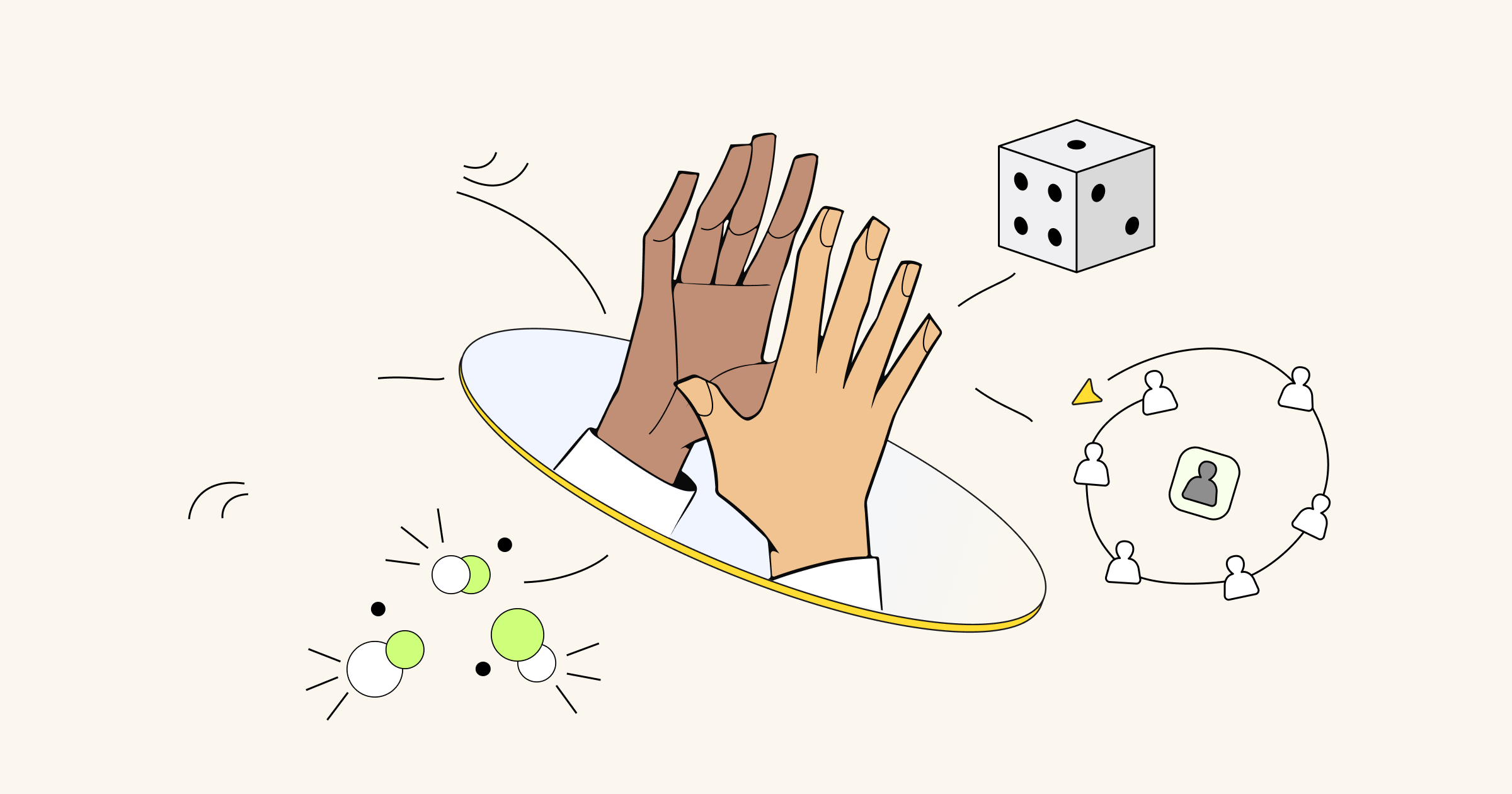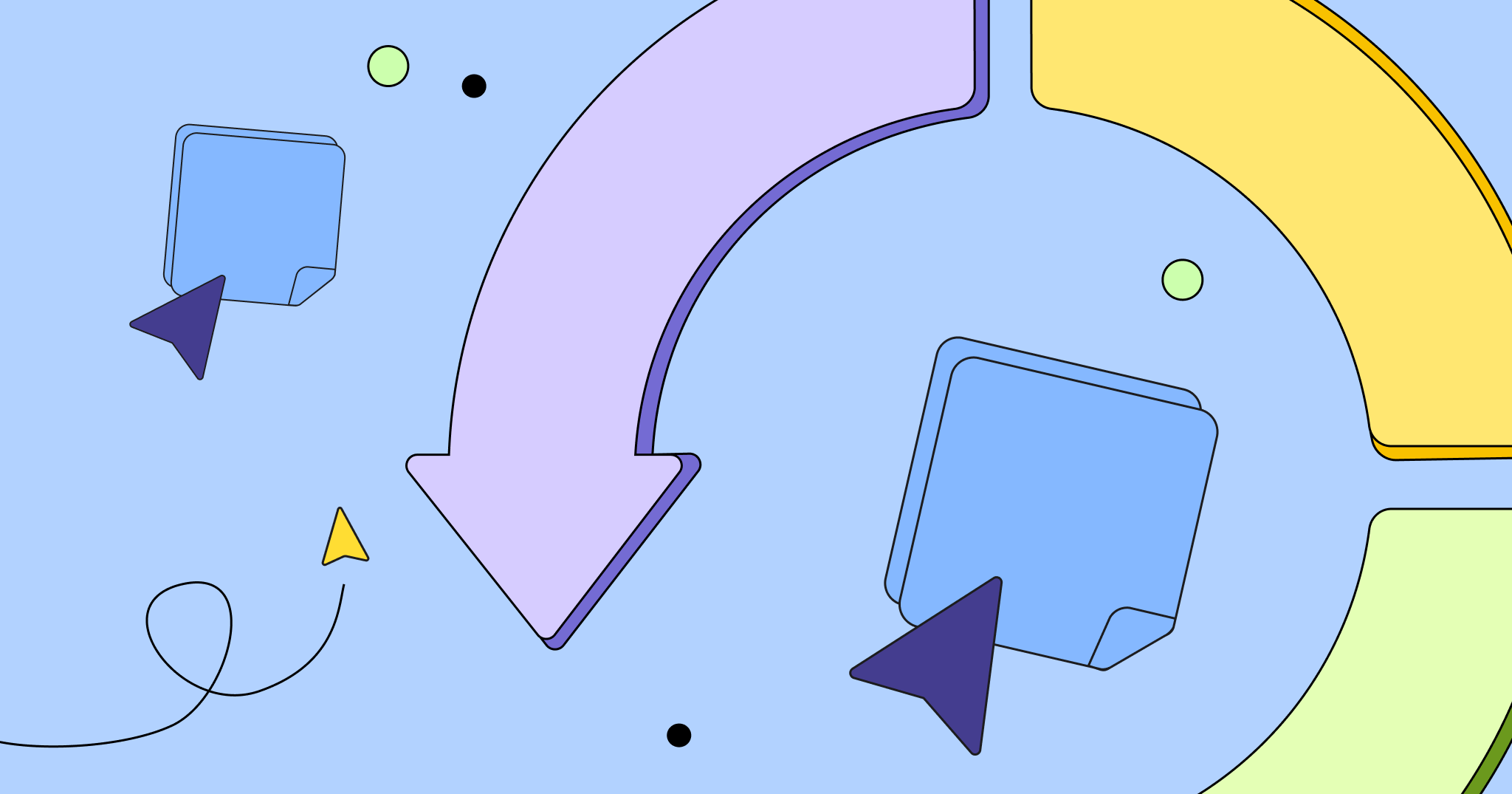With the explosion of Kanban, Lean and Agile frameworks for product development, whiteboarding has become a popular tool for teamwork. Simple visualization, rapid communication and fruitful collaboration have been the cornerstones of success in this ever-changing environment. As years passed, frustration arose. Now, when so many people are in digital environments and collaborate remotely, how can we reach this phygital experience while keeping the methodology as simple as possible?
To deal with this challenge, every company is trying to find its own combination of task management, messaging, document sharing and video conferencing services. In recent years, many teams have become connected, but not more productive.
What is missing in these workflows is a tool that can knit together all the employees and services and get rid of the process silos. That’s why we’ve created Miro, a visual workspace that makes communication and collaboration fast and effective.
Unlike other visualization tools, it can perform company-wide tasks as well as serve specific department purposes. Its growing library of add-ons for collaboration, visualization and planning means Miro supports a variety of use cases for any distributed team. At the same time, it. This makes Miro the perfect product for Agile coaches, UX researchers, product managers and many others. Let’s have a look at some of the ways you can use Miro to manage collaboration in your company.
A phygital environment is a combination of different technologies that creates a virtual environment that mimics a physical space. By incorporating different data sources, such as voice, video, images and documents, a phygital space leads to greater engagement and can improve the productivity of an entire organization.
1
Virtual room for asynchronous or real-time collaboration
Interdependence means you can’t move on without input from your talented colleagues. Fortunately, you can achieve ambitious goals together. But this factor can easily slow down the process, increase the number of iterations and cause personnel burnout. Oftentimes, synchronization within a distributed team is easier said than done.
Everyone working on a team speaks multiple professional “languages,” using data, pictures, spreadsheets, tasks and charts to get their point across. Documentation, task boards, mockups and code are constantly updated, and colleagues sometimes miss the changes, overwhelmed by all the incoming information.
Miro combines all these pieces in one place and lets your team collaborate beyond formats, tools, notifications, locations and time zones. You’re able to store everything on its infinite canvas, offering a helicopter view of the entire project. Any team member with access can open the board at any time to check the current status of any file, without having to search the branches of folders, switching logins or moving between tabs. Some files, like Google Docs, can be updated either in Miro or in the initial service, and they will be automatically updated and synced.
Giving a helicopter view and keeping up with the most recent status makes Miro an essential part of distributed regular operational meetings, handoffs, milestone reviews, standups, planning and retrospectives.
Visual workspaces are also good for productive feedback sessions between cross-functional team members. Remote developers won’t log in to Sketch to review design compatibility. They will likely receive an attachment via task, messenger or email. Then they’ll spend hours on discussions in threads or calls trying to reach a shared understanding of what needs to be improved. This is far from the productive feedback that is supposed to be specific and immediate.
To combat this problem, Miro can be a normalization layer for reviewing inputs in different formats. Anyone can immediately leave and receive comments on the files from different sources – no threads, no ambiguity. Everyone can keep working in the tools they like and meet in a shared space to discuss ideas and leave comments right on the mockup. And everyone sees everything in real time – a 100% phygital experience.
My favorite feature in Miro is the ability to @mention someone on an uploaded image, because it immediately sends a notification to the stakeholder. They become aware that an item requires their input for the project to move forward. My colleagues can quickly recognize which part of the design my comment is referring to, and ultimately there is less wait time communicating back and forth so projects can progress faster

Remote cross-service synchronization and specific feedback are just a few of the fundamental benefits that the 1.5 million Miro users on distributed teams make use of. Also high on the list of important features? Real-time collaboration sessions.
Even little features like being able to see each other’s cursors, gives that sense of presence that is hard to come by remotely

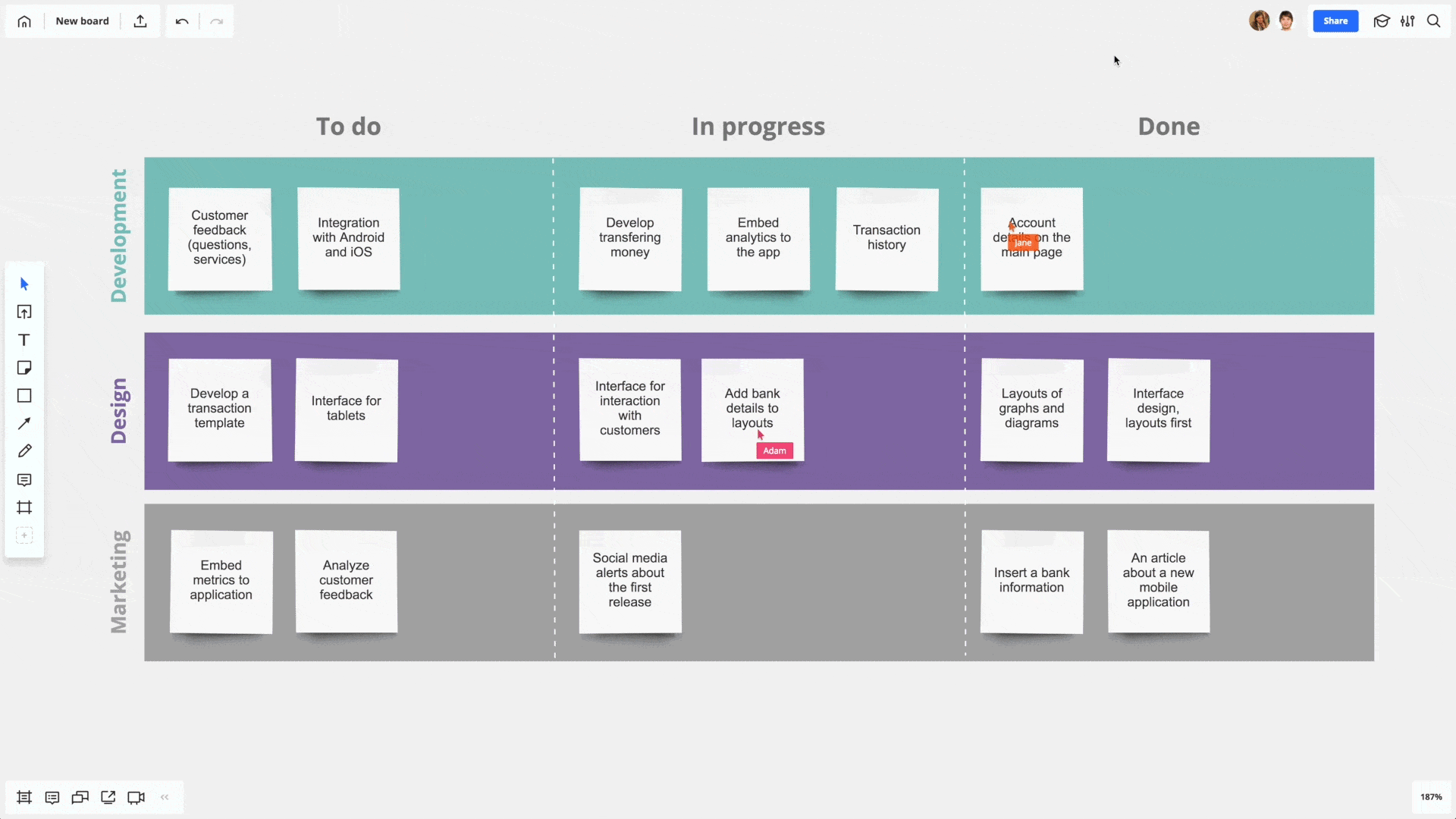
No matter where your teammates are, you can invite them to your boards and see all the changes they make in real time. You can silently follow their cursors, leave comments or join the contribution. If cursors are not representative enough, jump to a video chat session. Screen sharing helps users take center stage to make presentations and show content with full control.
2
Three pillars of a productive remote brainstorming session in Miro
When you think of brainstorming, what comes to mind? You may envision a whiteboard with a bunch of sticky notes and dry-erase markers. However, the idea of team members gathering in one room is becoming obsolete for most of us, because over the last 10 years, many organizations have shifted from opening local offices to running distributed teams.
With more and more teammates located outside the home office, Agile coaches, Scrum Masters and product managers need to look for brainstorming methods and tools that can overcome isolation and engagement challenges. Where should your brainstorming session take place then? It only makes sense to ideate using an online whiteboard. As a digital product with a physical background, Miro took the best from the both worlds.
First, it provides a remote facilitator, a person who is in charge of efficiency with managerial tools that increase engagement and audience interest. With the voting plugin you can carry out a remote voting session and invest in ideas that the majority of your team believes in. The Miro countdown timer will manage and track your time while running a brainstorming session in real time.
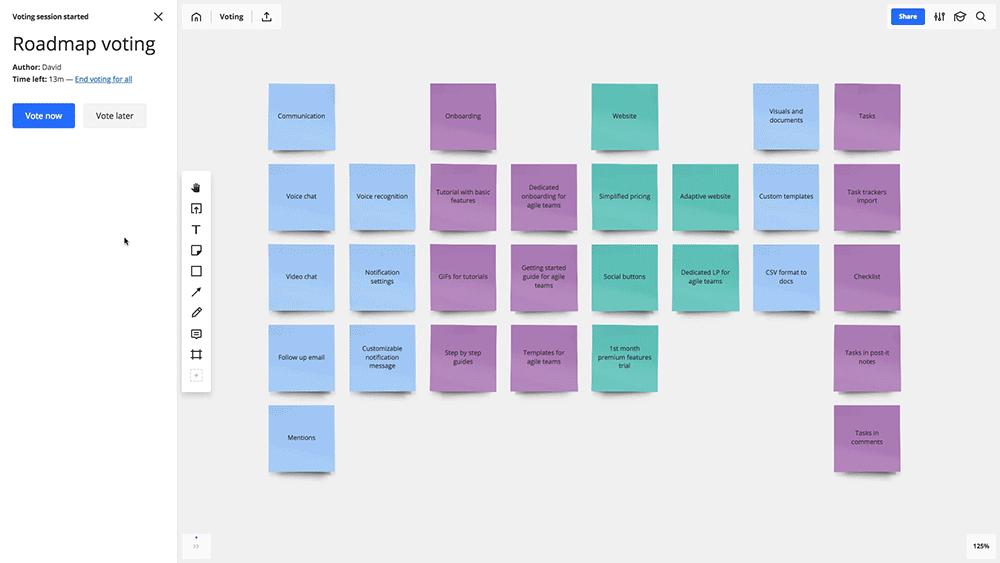
Occasionally, participants miss an opportunity to contribute, which negatively affects remote brainstorming. To solve this problem, Miro gives each board editor equal contributing rights, and all the changes are seen in real time. It’s not one-way or even two-way communication; it’s full communication.
A mix of strong facilitation and insightful contribution is nice, but not enough. Everything still can go wrong when it comes to getting things done. We bet you can remember those brainstorms that kept going over the same topic because, after the first meeting, nobody knew what to do. An effective brainstorming session must end up with an action plan; otherwise, it’s just a chat. To help you make progress toward your ideas, Miro has several integrations with task-tracking tools. You can either transform stickers into Jira issues or attach Miro boards to Jira or Trello cards.
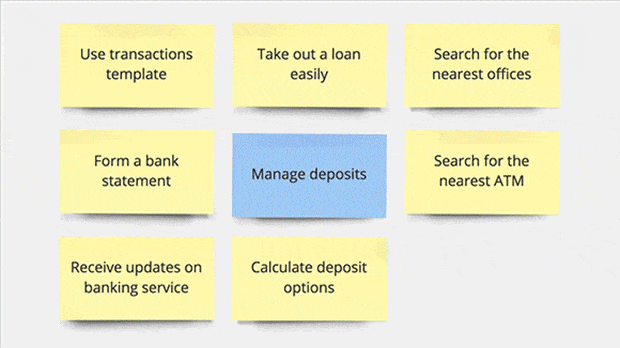
As more and more teams are made up of remote team members, old-school brainstorming tools and processes have evolved to keep the entire team engaged and contributing equally.
3
Engaging remote collaboration during Agile ceremonies
If your remote team can no longer put pen to paper or attach a sticky note to the board, you can’t see engagement in real time or manage the process effectively. What Scrum Team leaders usually start doing at this moment is trying to use video conferencing to make the process more natural. It is a common alternative, but it can’t replace the feeling of physicality and is subject to its own problems such as camera failures and bad audio connectivity. This alternative still limits engagement due to the inability of the team to fully participate.
Basically, what companies are trying to achieve by integrating video conferencing is to replicate the experience of physical collaboration online. The solution? Simply build a phygital environment with shared spaces like online whiteboards.
An online whiteboard is far more than just a blank surface on which to write and draw; it allows all team members to collaborate in a visual space in real time, just as if they were in the same room. Participants are able to share project files, leave comments, refer to team members and use emoji, text and video chats. The work can be seen by all participants, helping them quickly develop a shared understanding.
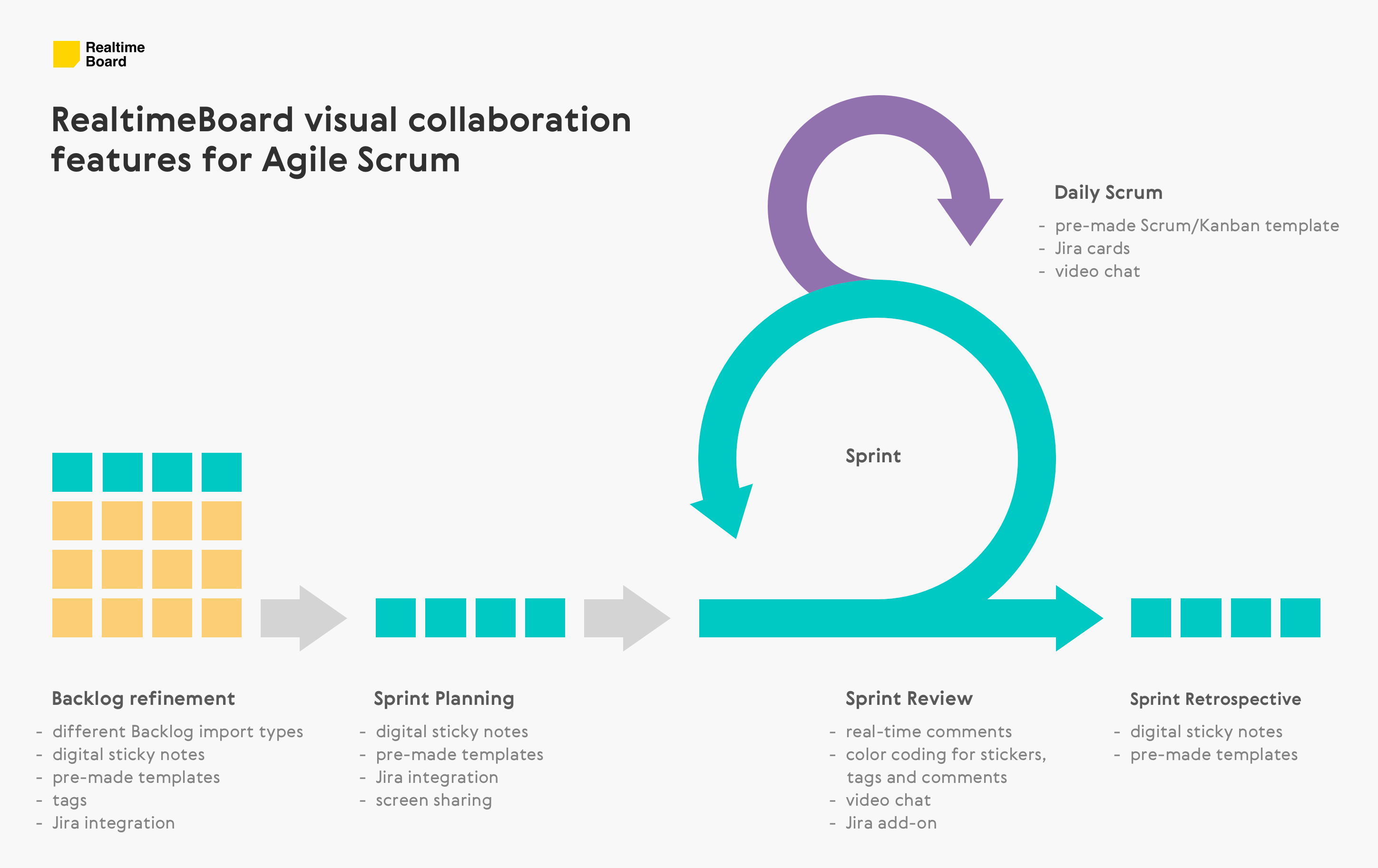
Integrations with commonly used applications that development, product and design teams use on a daily basis (e.g. Sketch, Adobe Creative Cloud, Rally and Jira) can not only save your team time and energy, but also foster cross-team collaboration.
Moreover, you can literally connect your offline whiteboard with Miro. The mobile app for iOS or Android can capture notes by taking a picture of the paper sticky notes, which will then be recognized as digital stickers within the visual workspace.
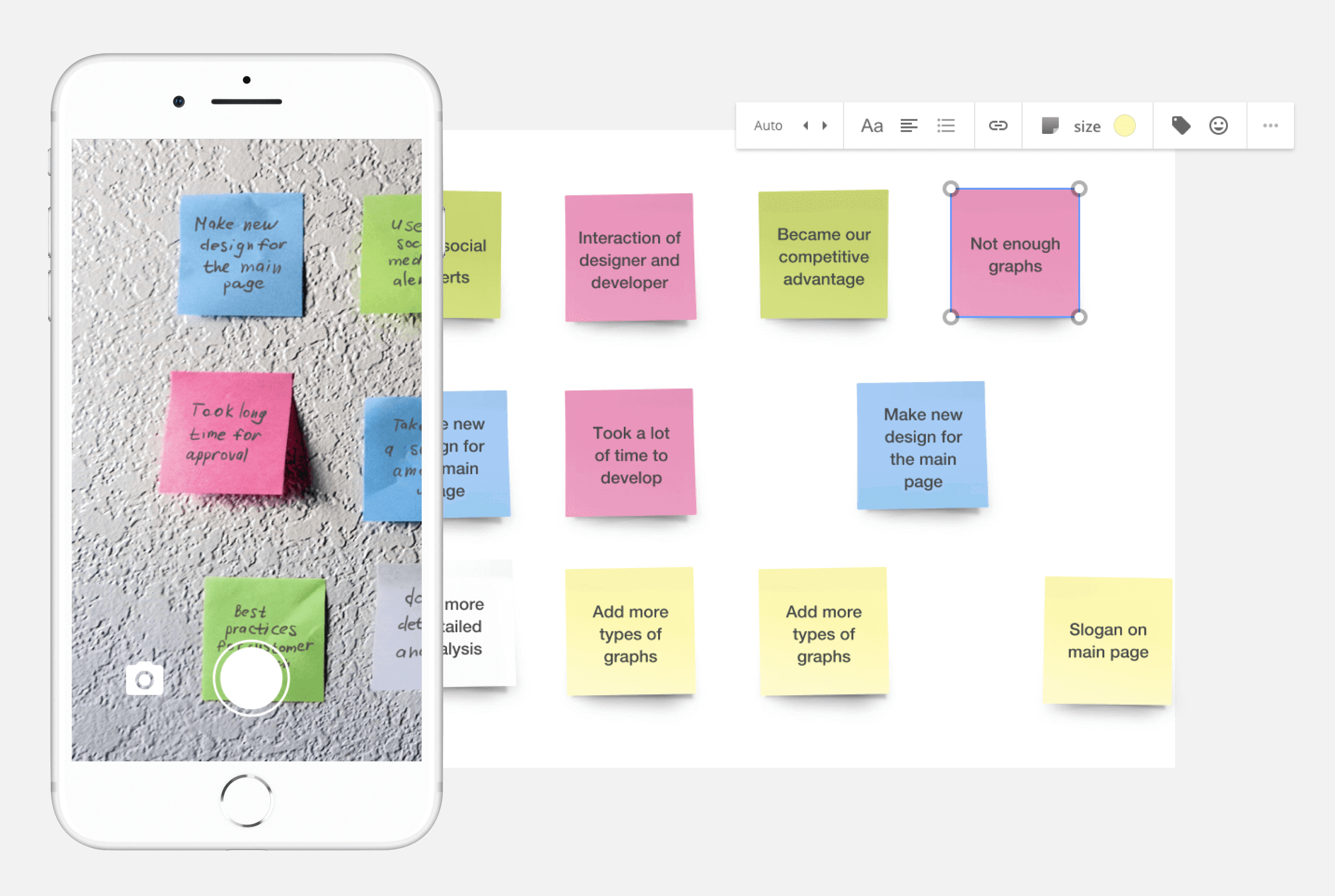
Companies such as Qlik, Trimble, Ipreo, Amdocs, Skyscanner, Solvay and Mingle Analytics already use Miro to manage their Agile ceremonies and enhance virtual collaboration. Miro covers the full cycle of Agile development, including Backlog refinement, Sprint planning, daily Scrums, Sprint Reviews and Retrospectives.
4
Simple visuals to get things done and polished mockups to impress
Our clients in the UX field told us that Miro is a good fit for various visualization purposes such as low-fidelity mockups, flowcharts, canvas workshops, mood boards, etc. Simpler than Sketch or Photoshop and more equipped than pen and paper, its biggest advantage is a functional and intuitive toolset that saves expensive working hours.
Its basic toolset protects designers from unnecessary beautification and gives developers a descriptive way to express ideas. Just like on a real whiteboard, you can visualize things using shapes, add and format text, brainstorm ideas with sticky notes and draw with a pen. You can also use the tool to its fullest and build complex layouts object by object. To structure your ideas and projects, try adding Frames. They act just like pages or artboards on a canvas. Frames are great for showcasing your board in presentation mode.
To level up your visualization skills, browse the template collection, which covers innovation and ideation, UX research and design, lean and Agile management, business analysis and more. Since it offers pre-made templates, managers can strategize without having to waste time recreating these frameworks from scratch. Miro designers have done the work for you.
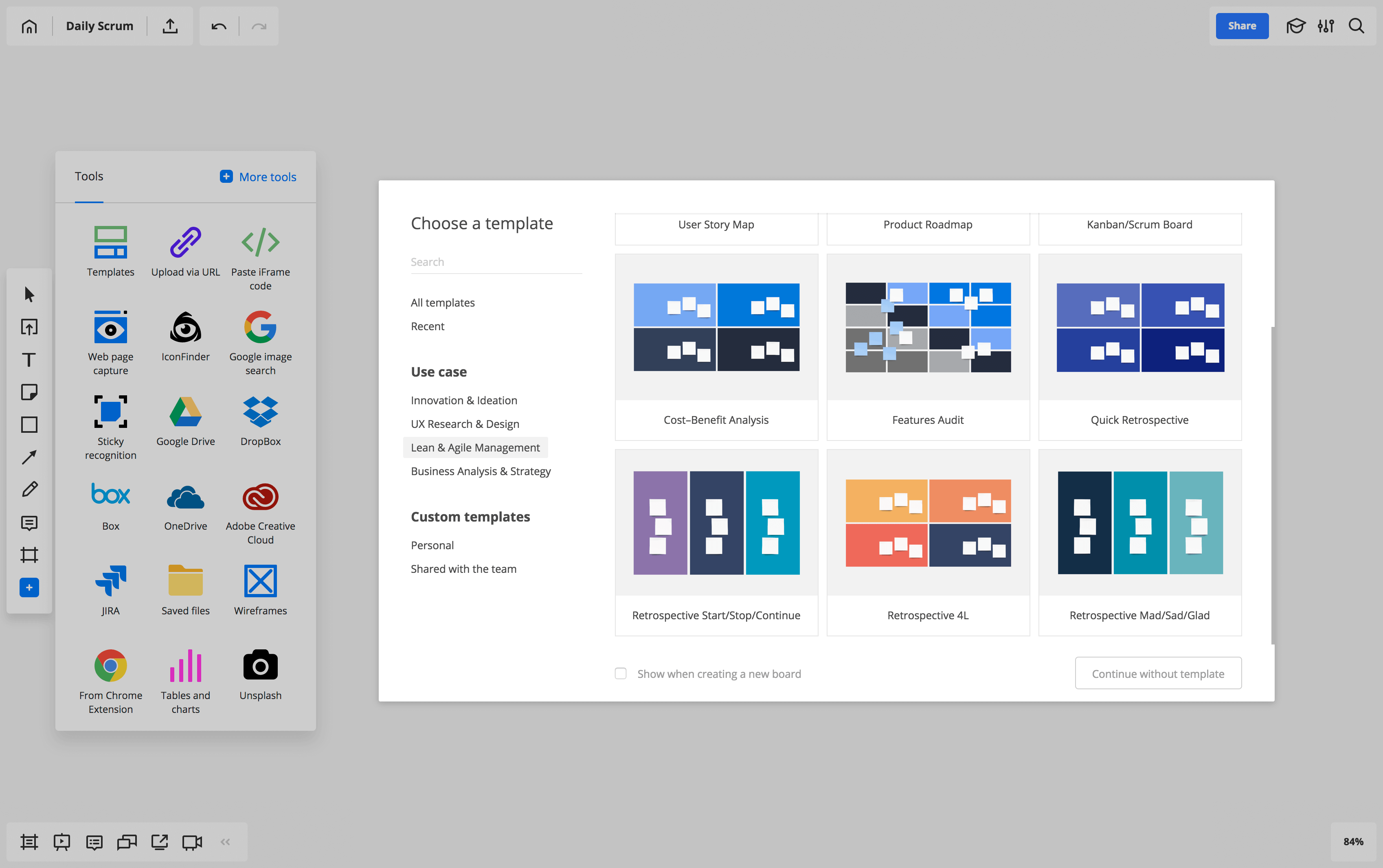
Under the “plus” icon, you can find many extended options for adding content: a wireframing library, icons from iconfinder, network system icons, web page previews, Jira cards, Google documents, image search, etc. Thanks to the growing library of plugins, Miro allows you to work with your favorite apps and tools. To have them at your fingertips, move the installed plugins to the toolbar. Browse the plugin library and customize the toolbar to keep your entire team productive, help visualize case-relative topics and reduce the distraction of switching between tools and folders.
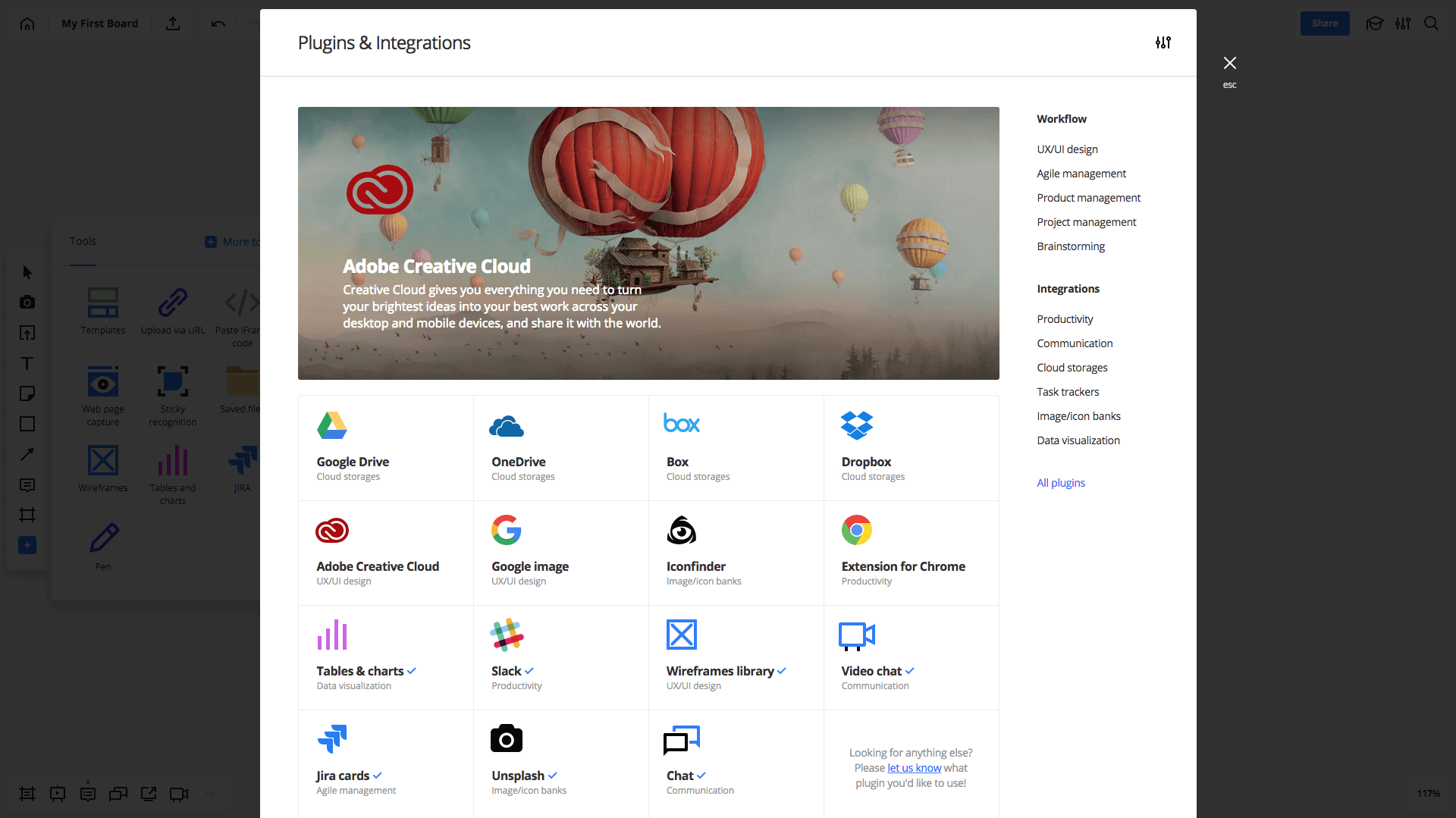
To sum up, we are happy to have reached the point where we are creating something that is beyond an online whiteboard. Our recently added features, extensions and use cases make Miro a visual workspace for innovation. Having embarked on this journey, we are excited to push even further and work together with our amazing clients to contribute to the future of work.
To learn more about a bigger vision behind our product, read our CEO’s essay.
When you get it right — when you all iterate, explain, draw mind maps, collect references, create moodboards, draw schemes, and finally, have this aha-moment you strived for — you experience “the joy of understanding”.


